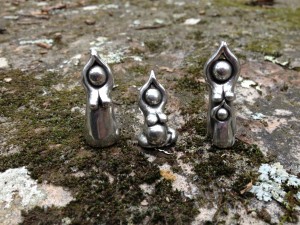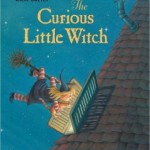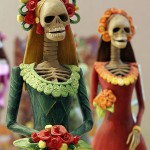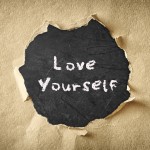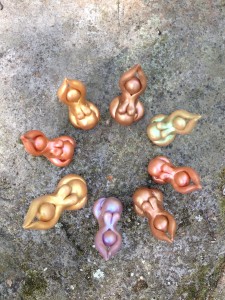 In one of my history classes at Ocean Seminary College, I read an article called Holle’s Cry: Unearthing a Birth Goddess in a German Jewish Naming Ceremony by Jill Hammer. The article addresses the merging of a Jewish naming ritual with the childbirth-celebrating ceremonies of the early Germanic goddess Holle and her later folk image, Frau Holle. Since my background is in birth education and activism, of course I was very interested and intrigued by Hammer’s article about Holle and the ritual associated with her: Hollekreisch.
In one of my history classes at Ocean Seminary College, I read an article called Holle’s Cry: Unearthing a Birth Goddess in a German Jewish Naming Ceremony by Jill Hammer. The article addresses the merging of a Jewish naming ritual with the childbirth-celebrating ceremonies of the early Germanic goddess Holle and her later folk image, Frau Holle. Since my background is in birth education and activism, of course I was very interested and intrigued by Hammer’s article about Holle and the ritual associated with her: Hollekreisch.
In the story of Holle and in the merger of her original role of midwife into demon, we see a clear example of how the Goddess moved from central sociocultural importance, to active rejection. She wasn’t just smoothed over or hidden, she was intentionally demonized. And, not coincidentally, as she lost power, so too did human women. Rather than women’s bodies being celebrated for the capacity to birth the species, the birth-giving function also slowly transformed into something “dirty” and unclean and as a punishment for woman’s sin, rather than the most awe-inspiring gift.
Stepping back, it seems clear to me that giving birth is the closest experience humans have with being Goddess-like—wouldn’t it make sense to imagine the Divine as female also? But, no, instead women are associated with the earthy and the physical, which is relegated to a level below the more advanced “spiritual” level to which men can aspire. Some time ago I read a quote from a male minister in which he actually said, “If there is ever a part of human anatomy that resembles the image of God it is the uterus.” And how! This may well be the crux of the matter. Patriarchal culture, religion, and the medical model of care cannot stand this fact. As Hammer explains:
“Future readers of the Hollekreisch ritual might choose to regard Frau Holle as an example of a divine feminine figure immanent in birth and death, embodying both the joy and the terror of creating new life, and representing the necessary, but perilous, separation of the child from the womb. Such an image would challenge internalized rabbinic norms that seek to control the unpredictability and femininity of birth—blaming women for death in childbirth, declaring the blood of childbirth impure—and substitute a more balanced view of the sacredness and danger of the life cycle. Indeed, Holle stands in a long line of mythic matriarchal figures, like Rachel and Leah, who are associated with birth and naming. Feminist theologians cannot and should not reduce women either to their birth function or to their traditional association (by male theologians) with death. But they can examine how we might speak about fertility and mortality in new theological terms that speak to womenʼs experience of childbirth and parenting. Investigating Holle as a largely positive figure could provide a useful tool for imagining a feminist theology of birth, life, and death” (p. 64).
We also see from Hammer’s article that while originally women were celebrated for the act of birth giving, it then became ignored and only male babies were celebrated: “The Mahzor Vitry ceremony may in fact be a precursor to Hollekreisch, which also involves a cradle and group response, but this early ceremony focuses on the child as a potential scholar of Torah. It was thus unavailable to girls, and the role of the woman who had given birth is virtually invisible” (p. 64).
If power does indeed rest in the stories that are told, how would the birth culture in the US change if we did have stories and rituals like the Hollekreisch (with original connection to the Goddess intact, of course)? In their book Milk, Money, and Madness, Michels and Baumslag explain: “In western society, the baby gets attention while the mother is given lectures [emphasis mine]. Pregnancy is considered an illness; once the ‘illness’ is over, interest in her wanes. Mothers in ‘civilized’ countries often have no or very little help with a new baby. Women tend to be home alone to fend for themselves and the children. They are typically isolated socially and expected to complete their usual chores, including keeping the house clean and doing the cooking and shopping, while being the sole person to care for the infant…” (p. 17)
This is in contrast with perhaps the original function of the Hollekreisch ceremony which acknowledged the mother’s vital role:
“The consistent connection of the ritual with the motherʼs rise from childbed, and the home-based nature of the ceremony, seem to indicate that the Hollekreisch ceremony gave the mother an important role. Hayyim Schauss, whose research was based on interviews, eyewitness accounts, and historical writings dating from the seventeenth century, indicates that in some areas of Germany, a synagogue ritual preceded the ceremony. The mother of the child walked to worship with the local rebbetzin and donated a new wrapper (wimple), with the infantʼs name sewn onto it, for the Torah scroll. This allowed the mother and her ability to give birth to be celebrated along with the new child—which may be precisely why the ceremony became associated with, or was originally rooted in, the legend of Frau Holle” (p. 66, emphasis mine).
I am fascinated by the depiction of Holle as both Goddess and witch and her parallel with Lilith and the connection then made between Holle as both Lilith and Eve:
“Yet Holle may very well be a useful mythic figure for women. If Lilith embodies the fear women feel during childbirth, then Holle, if we add to our understanding of her character, embodies both that frightening vulnerability and womenʼs power of life. Holle is Eve the life-giver and Lilith the witch joined together” (p. 72)
In birth education, we speak of childbirth as a rite of passage, an intense initiatory rite, and as a hero’s journey. It appears to me that the Hollekreisch or other ceremonies like it, also acknowledge the hero’s journal, the liminal moments, the threshold, this time in which the veil between world’s very, very thin for the mother, probably the thinnest she will ever experience. I love the description of the ritual of Hollekriesch possibly honoring birth as women experienced it and bringing the mother into a recognized and valued role:
“The ceremony of Hollekreisch, if we link it to the figure of Frau Holle in her full range of attributes, takes on a new life. We can re-understand it as a ritual that honored birth as women experienced it: dangerous and necessary, painful and exhilarating, wondrous and sometimes tragic. Hollekreisch, while making reference to the Torah and other Jewish symbols, challenged the Jewish norm—birth ceremonies that honored male parentage and male covenant and ignored women—with a ritual that celebrated the emergence of life out of the womb, made the mother a central ceremonial figure, and recognized both girls and boys as members of the human community…As a theological image, Holle needs neither a male partner nor a female “shadow”; she is strong and beautiful, housewifely and wild, fierce and gentle—both Eve and Lilith. It is just possible that stories of Frau Holle may have affected how Jewish women and men regarded the birth of girls and the power of women to give birth. At the very least, we can let these stories change us…” (p. 81)
And, we can let old stories inspire healthy, powerful new stories to guide us forward.
